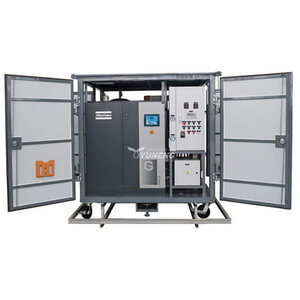-
 Encontrar enMiembros
Encontrar enMiembros Encontrar enVideos
Encontrar enVideos Encontrar enCanales
Encontrar enCanales
This website uses cookies to ensure you get the best experience on our website.
To learn more about our privacy policy haga clic aquíPreferencia de privacidad
-
- Última actualización 28 de febrero de 2024 0 comentarios, 175 vistas, 0 likes
More from qian liu
More in Politics
Related Blogs
Advances in Dry Air Generator Technology
Cuerpo
Dry air generators, unsung heroes of various industries, play a crucial role in controlling humidity and protecting sensitive equipment. These devices remove moisture from ambient air, creating a dry environment for applications ranging from food preservation to electrical maintenance. But the technology behind these generators is constantly evolving, leading to exciting advancements.
Traditional Powerhouses
The two dominant methods for drying air remain refrigerated air drying and desiccant adsorption drying. Refrigerated dryers work similarly to your home refrigerator, using a heat exchanger to condense moisture from compressed air. Desiccant dryers, on the other hand, employ moisture-absorbing materials like silica gel to capture water vapor from the air stream.
Emerging Innovations
While these traditional methods are reliable, several promising advancements are changing the game:
- Membrane dryers: These utilize selective membranes that allow certain gases to pass through while blocking others, including water vapor. This method offers several advantages, including lower energy consumption and a smaller footprint compared to traditional options.
- Hybrid systems: Combining the strengths of different approaches, these systems aim to optimize performance and efficiency. For instance, a hybrid system might combine refrigeration with desiccant adsorption for situations requiring both high dew point (a measure of dryness) and large flow rates.
- Material advancements: Researchers are constantly developing new and improved desiccant materials with higher moisture absorption capacity, faster regeneration times, and lower energy requirements for regeneration.
Benefits of Innovation
These advancements translate into several benefits for users:
- Increased energy efficiency: Newer technologies can significantly reduce the energy consumption of dry air generators, leading to cost savings and a smaller environmental footprint.
- Improved performance: Advancements can lead to drier air with lower dew points, crucial for protecting sensitive equipment and ensuring optimal process conditions in various industries.
- Compact and portable designs: New materials and technologies can lead to the development of smaller and lighter dry air generators, making them more portable and suitable for diverse applications.
The Future of Dry Air Generation
The future of dry air generator technology appears bright, with continued innovation focusing on sustainability, efficiency, and customization. As the technology evolves, we can expect even more efficient, compact, and environmentally friendly dry air generators catering to the specific needs of various industries.









Comentarios